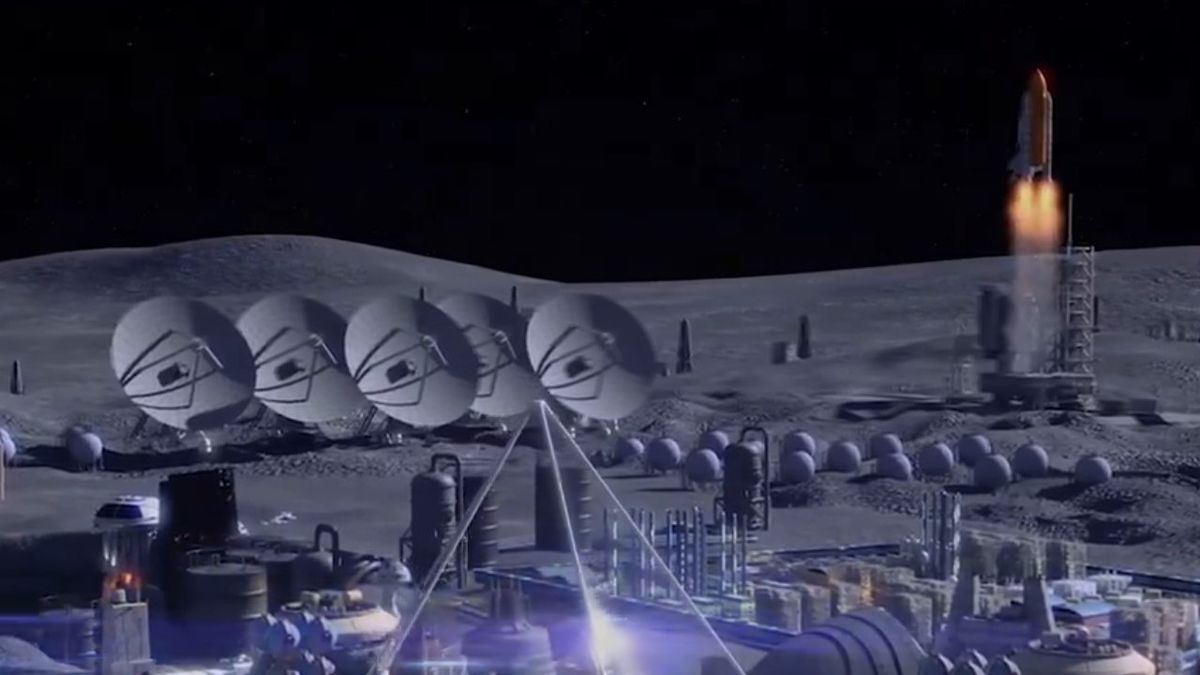Earth bacteria quickly colonized Japan’s invaluable asteroid sample from Ryugu.

Japan’s priceless asteroid Ryugu sample got ‘rapidly colonized’ by Earth bacteria (Image Credit: Space.com)
Scientists have discovered that a sample of the asteroid Ryugu was overrun with Earth-based life forms after being delivered to our planet. The research shows how successful terrestrial micro-organisms are at colonization, even on extraterrestrial materials.
The samples were collected by the Japan Aerospace Exploration Agency (JAXA)’s spacecraft Hayabusa2, which launched in December 2014 and rendezvoused with Ryugu in June 2018. Haybusa2 then spent a year studying the asteroid, which has a diameter of around 3,000 feet (900 meters), before diving to its surface and scooping out a sample.
This Ryugu sample was returned to Earth on Dec. 6, 2020, but Haybusa2 continued on to study more asteroids. The sample was split and sent to various teams of scientists, including the team that made this new discovery.
“We found micro-organisms in a sample returned from an asteroid. Theyappeared on the rock and spread with time before finally dying off,” team leader Matthew Genge of Imperial College London told Space.com. “The change in the number of micro-organisms confirmed these were living microbes. However, it also suggested they only recently colonized the specimen just before our analyses and were terrestrial in origin.”
The discovery took the form of rods and filaments of organic matter, which the team interpreted as filamentous microorganisms. Exactly what type of microorganisms these were isn’t known by the team, but Genge has a good idea of what they may be.
“Without studying their DNA, it is impossible to identify their exact type,” the researcher said. “However, they were most likely bacteria such as Bacillus since these are very common filamentous micro-organisms, particularly in soil androcks.”

Of course, with humanity currently engaged in the search for microbial life beyond the limits of our planet, particularly on Mars, the question is, could these micro-organisms have been present on Ryugu when the sample was gathered and thus could they represent alien life?
Disappointingly, the team has successfully and conclusively ruled this out.
“Before we prepared the sample, we performed nano-X-ray computed tomography, and no microbes were seen,” Genge said. “In any case, the change in population suggests they only appeared after the rock was exposed to the atmosphere, more than a year after it was returned to Earth.”
The researchers found that within a week of exposing the specimen to the Earth’s atmosphere, 11 microbes were present on its surface. Just a week later, the population of terrestrial colonizers had grown to 147.
“It was very surprising to find terrestrial microbes within the rock,” Genge said. “We usually polish meteorite specimens, and microbes rarely appear on them. However, it only needs one microbial spore to cause colonization.”

While these results don’t really tell us anything about extraterrestrial life, they do speak to the hardiness of life forms here on Earth, particularly micro-organisms. The findings also have implications for the effects that spacecraft and rovers could have on the planets they visit.
“It shows that microorganisms can readily metabolize and survive uponextraterrestrial materials. On Earth, there is abundant home-grownorganic material available, but on planets such as Mars, extra-martianorganic materials may support an ecosystem,” Genge said. “Our findings suggest that space missions could be contaminating space environments. It also shows that terrestrial microorganisms are adept at rapid colonization.”
Fortunately, as Genge pointed out, space agencies employ planetary protection efforts designed to minimize the likelihood of contamination.
Genge also warns that scientists should be cautious of contamination when future samples are returned to Earth before assuming the detection of extraterrestrial life.
“The fact that terrestrial microbes are the Earth’s best colonizers means we can never completely discount terrestrial contamination,” the researcher continued. “Most of the time, contamination is not a problem as long as you know its source. The problem comes when scientists attempt to claim that the ‘pristine’ nature of a specimen is evidence that features are extraterrestrial.”
As for the Imperial College of London researcher and his team, they are looking forward to examining more asteroid samples, hopefully free from visitors from Earth!
“The team is continuing to study samples from Ryugu and Bennu. Hopefully, next time without terrestrial bacteria colonizing these materials!” Genge concluded.
The team’s research was published in the journal Meteoritics & Planetary Science.





